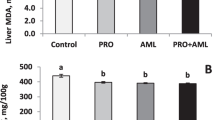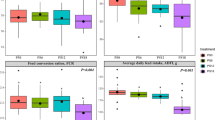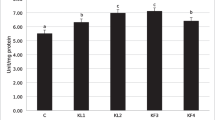Abstract
The total lipid content and fatty acid composition were determined in the flesh and skin of wild and cultured rainbow trout in Turkey. The effect of diet content was also investigated on cultured trout. Gas chromatography-mass spectrometry (GC-MS) was used for fatty acid analyses. Total lipid content of skin was higher than flesh in both types and when compared appreciably higher in cultured fish. The predominant fatty acid was palmitic acid (C16∶0) in saturated fatty acids and oleic acid (C18∶1n−9) in monounsaturated fatty acids. The amount of eicosapentaenoic acid was double in wild and docosahexaenoic acid (DHA) 1.5 times higher in cultured fish flesh. The n−3/n−6 ratio was higher in cultured fish than wild fish. The levels of palmitic, oleic, linoleic (C18∶2n−6) and palmitoleic (C16∶1n−7) acids were high in skin. The level of EPA was the same in skin of wild fish but 5.5 times higher in cultured fish, where as the proportion of DHA in skin was lower for wild and 3.5 times higher in cultured fish. Wild fish had a high level of linoleic, arachidonic (C20∶4n−6) and linolenic (C18∶3n−3) acids. The total amount of n−3 and n−6 polyunsaturated fatty acids was higher in flesh of wild fish than cultured fish, contrary to skin of cultured fish. The data obtained demonstrated that fatty acid composition of cultured fish did not depend on that of feed.
Similar content being viewed by others
References
Daviglus ML, Stamler J, Orencia AJ, Dyer AR, Liu K, Greenland P, Walsh MK, Morris D, Shekelle RB. Fish consumption and the 30 year risk of fatal myocardial infarction. N. Engl. J. Med. 1997; 336: 1046–1053.
Bates D, Cartlidge N, French JM, Jackson MJ, Nightingale S, Shaw DA, Smith S, Woo E, Hawkins SA, Millar JHD, Belin J, Conroy DM, Gill SK, Sidey M, Smith AD, Thompson RHS, Zilka K, Gale M, Sinclair HM. A double-blind controlled trial of long chain n−3 polyunsaturated fatty acids in the treatment of multiple sclerosis. J. Neurol. Neurosurg. Psychiatr. 1989; 52: 18–22.
Hearn TL, Sgoutas SA, Hearn JA, Sgoutas DS. Polyunsaturated fatty acids and fat in flesh for selecting species for health benefits. J. Food Sci. 1987; 52: 1209–1211.
Bergstrom E. Effect of natural and artificial diets on seasonal changes in fatty acid composition and total body lipid content of wild and hatchery-reared Atlantic salmon (Salmo salar L.) parr-smolt. Aquaculture 1989; 82: 205–217.
Chanmugan P, Boudreau M, Hwang DH. Differences in the ω3 fatty acid contents in pond-reared and wild fish and shellfish. J. Food Sci. 1986; 51: 1556–1557.
Jahncke M, Hale MB, Cooch JA, Hopkins JS. Comparison of pond-raised and wild red drum (Sciaenops ocellatus) with respect to proximate composition, fatty acid profiles, and sensory evaluations. J. Food Sci. 1988; 53: 286–287.
Ackman RG, Takeuchi T. Comparison of fatty acid and lipids of smolting hatchery fed and wild Atlantic salmon (Salmo salar). Lipids 1986; 21: 117–120.
Alasalvar C, Taylor KDA, Zubcov E, Shahidi F, Alexis M. Differentation of cultured and wild sea bass (Dicentrarchus labrax): total lipid content, fatty acid and trace mineral composition. Food Chem. 2002; 79: 145–150.
Castell JD, Lee DJ, Sinnhuber RO. Essential fatty acids in the diet of rainbow trout (Salmo gairdneri): lipid metabolism and fatty acid composition. J. Nutr. 1972; 102: 93–100.
Reinitz GL, Yu TC. Effects of dietary lipids on growth and fatty acid composition of rainbow trout (Salmo gairdneri). Aquaculture 1981; 22: 359–366.
Bligh EG, Dyer WJ. A rapid method of total lipid extraction and purification. Can. J. Biochem. Physiol. 1959; 37: 911–917.
Joseph JD, Ackman RG. Capillary column gas chromatographic method for analysis of encapsulated fish oils and fish oil ethyl esters: collaborative study. J. AOAC Int. 1992; 75: 487–506.
Singer P, Jaeger W, Wirth M, Voigt S, Naumann E, Zimontkowski S, Hajdu I, Goedicke W. Lipid and blood pressurelowering effect of mackerel diet in man. Atherosclerosis 1983; 49: 99–108.
Herold PM, Kinsella JE. Fish oil consumption and decreased risk of cardiovascular disease: a comparison of findings from animal and human feeding trials. Am. J. Clin. Nutr. 1986; 43: 566–598.
Tanakol R, Yazici Z, Sener E, Sencer E. Fatty acid composition of 19 species of fish from the Black Sea and the Marmara Sea. Lipids 1999; 34: 291–297.
Saglik S, Imre S. ω3-Fatty acids in some fish species from Turkey. J. Food Sci. 2001; 66: 210–212.
Author information
Authors and Affiliations
Corresponding author
Rights and permissions
About this article
Cite this article
Aslan, S.S., Guven, K.C., Gezgin, T. et al. Comparison of fatty acid contents of wild and cultured rainbow trout Onchorhynchus mykiss in Turkey. Fish Sci 73, 1195–1198 (2007). https://doi.org/10.1111/j.1444-2906.2007.01452.x
Received:
Accepted:
Issue Date:
DOI: https://doi.org/10.1111/j.1444-2906.2007.01452.x




